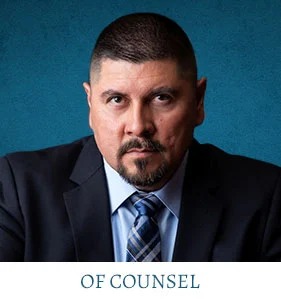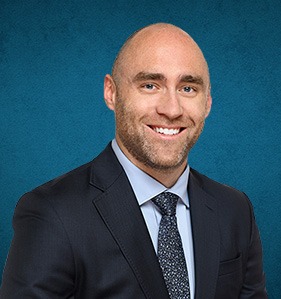CALL (800) 863-5312 TO SPEAK WITH LONGMONT PERSONAL INJURY ATTORNEYS FOR FREE
After an accident causes an injury, the victim is oftentimes left in a very difficult and confusing place. You may be left wondering, “How do I file a claim? Am I entitled to compensation? If so, how much, and how do I get it?” To answer these questions, it may be necessary to consult with an experienced personal injury lawyer who may work with you and dive into the details of your specific case.
If you or a loved one suffered an injury as the result of an accident, call the Longmont personal injury attorneys at (800) 863-5312 for a free consultation.
WHAT IS A PERSONAL INJURY?
Personal injury is a commonly-used phrase, but what does it mean, exactly? Personal injury is simply any injury inflicted on the body, mind, or emotions, as opposed to an injury to property. It can happen in many different ways, whether it be a car accident that leaves a victim with severe spinal cord damage or a dog that breaks free from its leash and bites a bystander. When someone is legally responsible for the injuries of another, whether it be because of negligence or intentional misconduct, they will typically be liable for paying damages to that party. There are a lot of intricacies involved in the process of determining exactly how much these damages are and who they are paid to, but a general understanding of the process can be helpful.
COMMON TYPES OF PERSONAL INJURY CLAIMS
Given the broad reach of the field of personal injury law, the types of cases that it includes are incredibly varied and complex. However, there are a few types of broad categories that tend to crop up more commonly than others.
Car Accidents
Car accidents occur in the state of Colorado every day. They can happen in many different ways, including collisions between multiple vehicles and single-car accidents. The causes of car accidents also vary widely and can include distracted driving, driving while under the influence of drugs or alcohol, or simply not paying close enough attention to the rules of the road. The resulting injuries can range from fairly minor to life-altering—although we understand that to an accident victim, their own injuries are never insignificant.
Truck Accidents
Truck accidents often have similar causes as car accidents between two passenger vehicles. However, given the size and weight of 18-wheelers, the injuries can oftentimes be more severe. There are also sometimes more complications resulting from the fact that truck drivers are usually employees of larger trucking companies, which means that there are extra rules and regulations drivers need to follow.
Workplace Accidents
Workplace accidents might seem like they only occur in dangerous worksites like logging or construction. However, this is not the case. A workplace accident can occur in any workplace. For example, you may trip on an exposed corner of the carpet that should have been fixed or tip over on a ladder while changing out a lightbulb.
Dog Bite Injuries
In Colorado, dog owners are held to a standard of “strict liability.” This means that they are responsible for the injuries that their dogs cause, even if they did not have any reason to know beforehand that their dog might be dangerous or have a propensity towards biting.
show_CaseResultsSlider]
DETERMINING LIABILITY
The first step in attempting to seek damages from a party who negligently caused your injuries is to establish liability. Accidents do happen, and there are certain injuries that no one is liable for. However, negligence, and subsequently liability, can be established if the four basic elements are met.
Duty
The duty of care is a legal obligation that one person has towards another. Generally, everyone has the duty of care to ensure that they act reasonably towards people who might be put into harm’s way because of their actions. This means that drivers on the road have a duty to drive carefully in order to prevent accidents, and store owners have a duty to keep their premises safe for those they invite in to do their shopping.
Breach
Once a duty has been established, the next step is to establish that that person breached that duty. For example, after establishing that a store owner had a duty towards the shoppers in their store, proving that there had been a puddle on the ground that led to your slip and fall may prove that the store owner was in breach of that duty.
Causation
After establishing duty and breach, a plaintiff must next prove causation. Causation is the link between the actions of the defendant and the injuries that you suffered. For example, you may be able to draw the causal link between the puddle on the floor of the store and the fall you experienced that led to your broken leg. As a counterexample, if someone suffered a fall in a store that was simply due to stumbling over their own feet, then the element of causation is probably not going to be met.
Damages
Finally, after establishing all of the above elements, a plaintiff needs to establish that they were actually harmed. This can be established through medical records or hospital bills from dealing with injuries incurred as a result of the accident.
FILING A PERSONAL INJURY CLAIM
Given the wide range of personal injury claims that exist, the process for seeking compensation can look vastly different from case to case. However, most personal injury claims will typically follow the same general steps.
1. Speak with a Longmont Personal Injury Attorney
Speaking with our experienced personal injury attorneys can be a great place to begin the process. First, an attorney may be able to give you a better understanding of what your case could be worth and how to proceed. An attorney may also be able to handle most of the legwork and guide you through the process of seeking maximum compensation.
2. Investigation
After you have chosen an attorney to work with, they may be able to get to work investigating the details of your case. The evidence that they will look for will vary greatly from case to case, but some of the items might include medical records, invoices and bills, and photo evidence of the scene of the accident.
3. Negotiate
After your attorney has the information that they need, they may be able to begin the next step of negotiating with the other parties, such as insurance companies, involved in your case. At this juncture, an experienced attorney may be able to accentuate the strengths of your position while minimizing its weaknesses during negotiations as you focus on your recovery from your injuries.
WHO IS RESPONSIBLE FOR MY INJURIES?
The person who is responsible for your injuries depends largely on the type of accident that you were involved in and the unique details surrounding it. Just to name a few, the responsible party could be a store owner, a truck driver, a local government agency, a dog owner, or even a family member. Insurance companies may be on the hook for paying you compensation if you or another party had insurance coverage. A Longmont personal injury lawyer may be able to help you determine exactly who the party is that might be liable for your injuries.
LEGAL TIME LIMITS
When pursuing a personal injury claim, it is important to be aware of the relevant statute of limitations. The statute of limitations is the legal term for how long you have to file a claim before it is barred. For example, if the statute of limitations for the type of claim that you are filing is two years, then you have two years from the date of the accident to bring a claim, or risk receiving nothing, even for a credible claim. In Colorado, the statute of limitations is two years for many personal injury claims, but this can vary.
The statute of limitations may be altered in certain circumstances. For example, if the accident victim was a minor at the time that the accident occurred, then the statute might be paused until they reach the age of 18. Accident victims don’t always realize that they have been injured until sometime after their accident. If this is the case, then the statute of limitations period might be paused until the symptoms present themselves. Regardless, it is advisable to seek the advice of an attorney as soon as possible after your accident to avoid running into any sort of issue with the timing of your claim.
TRUST THE ATTORNEYS AT ZINDA LAW GROUP
We believe accident victims should not have to worry about affording legal representation. This is why we work on a contingency fee basis, which means you don’t owe us anything unless we win your case. We pride ourselves on providing quality legal representation to clients to allow them to get their lives back on track after an accident.
If you or a loved one suffered an injury as the result of an accident, then call the Longmont personal injury attorneys at (800) 863-5312 for a free consultation.
Meetings with attorneys by appointment only. AWARDED TO JOHN C. (JACK) ZINDA BY THE NATIONAL TRIAL LAWYERS ASSOCIATION (2016-2020) AWARDED TO JOHN C. (JACK) ZINDA (2009, 2011-2012, 2014-2021), & NEIL SOLOMON (2020-2021) AWARDED TO JACK ZINDA (2016-2020) LIFETIME MEMBERS JOHN C. (JACK) ZINDA
Our Awards

John (Jack) Zinda
Founder / CEO
Over 100 years of combined experience representing injured victims across the country.
Available 24 / 7|Free Consultation
Neil Solomon
Partner
Real results matter. We do not get paid unless we win your case.
Available 24 / 7|Free Consultation

























